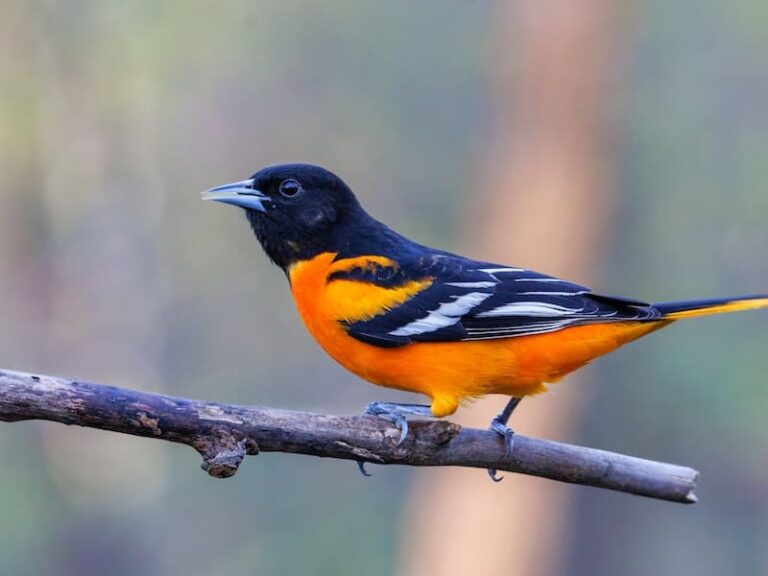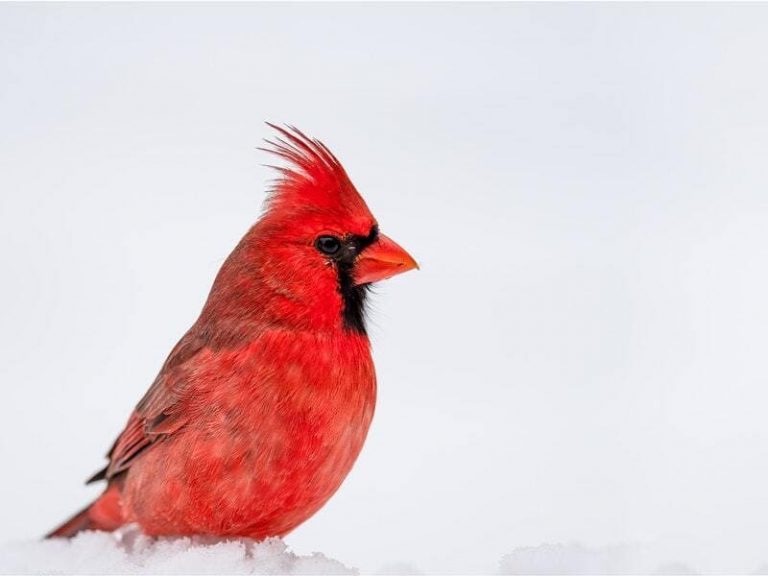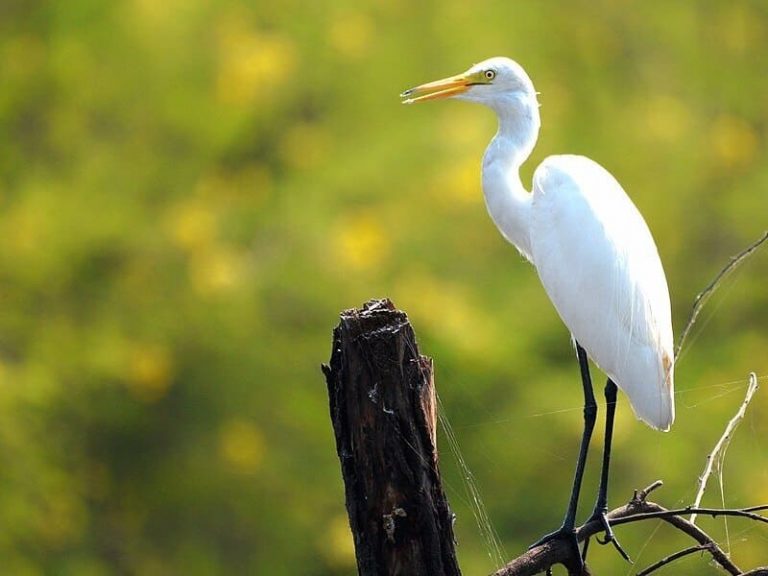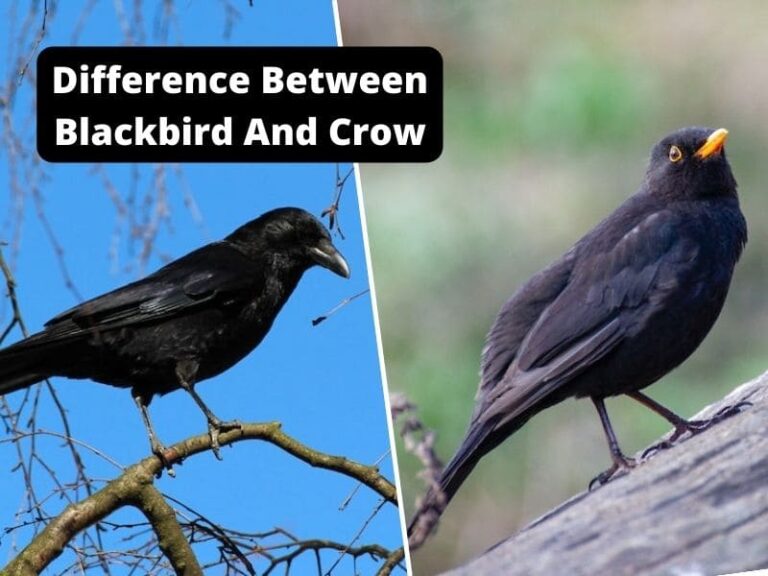15 Small Birds In Massachusetts (With Pictures)

If you are lucky enough to live in Massachusetts, then there is a good chance that you’ve seen some of the state’s most adorable residents. These residents are some fascinating small birds that are found there.
A delightful treat for birdwatchers and nature lovers alike, these birds offer something special to those lucky enough to encounter them: an appreciation of the beauty and diversity found in our natural world.
Whether darting between feeders or flitting through the forest canopy, these enchanting creatures bring joy into any outdoor experience with their playfulness and charm.
Keep reading if you’re curious about the types of 15 small birds in Massachusetts and how you can identify them.
What are the small birds in Massachusetts?
Massachusetts is home to various species of small birds, such as American Goldfinches, Cedar Waxwings, and Dark-eyed Juncos.
Each kind of bird has its own characteristics. For example, the American Goldfinch is a beautiful yellow bird with an orange wingspan that feeds on thistle and sunflower seeds at bird feeders.
The Cedar Waxwing is a light brown bird with a bold black head crest and yellow-tipped tail feathers that can often be spotted in large flocks feasting on berries in gardens.
Lastly, the Dark-eyed Junco is a small grey bird with white outer tail feathers and dark eyes that typically forage for food near wooded edges or on backyards lawns.
It’s no wonder why so many people take pleasure in watching these small birds throughout the state. Massachusetts is a great place to see a variety of small birds, including typical backyard species like the American Goldfinch, Northern Mockingbirds, and Song Sparrows.
Even sharper eyes may spot an occasional Ruby-throated Hummingbird or Eastern Towhee perched in a tree among the larger population of Robins and Black Capped Chickadees.
It’s always an exciting time when nuthatches, waxwings, and warblers visit on their way north in the warmer months.
A silent observer can often spot woodpeckers foraging for food beneath the bark of trees throughout Massachusetts. With so many species visiting and living in the state, one may enjoy watching these small birds flit around from early spring through late fall.
If you want to know about some interesting small birds with long beaks, small birds that have white and black colors, and small birds with black and white heads, then you must check out our blog and get some valuable insights about small birds today.
Black-capped chickadee

The Black-capped Chickadee is a common sight in Massachusetts, although they are found throughout much of North America. Chickadees often flock to bird feeders, scavenging for sunflower seeds, suet, and other bird treats.
These small birds have an impressive vocal range and are easily identified by their soft “chick-a-dee-dee” song. Beautiful white feathers with grey backs give them the perfect camouflage for their tiny size, helping them to evade predators comfortably in Massachusetts’ diverse forests.
Identifying this iconic native species of bird can be an enjoyable way to appreciate the natural beauty of Massachusetts. As its name implies, it has a distinctive jet-black cap that stands out against its white cheeks. It has a short tail and a small bill, making it look quite petite.
These birds are also highly sociable and are often seen in flocks with other chickadees, both in yards and parks.
They forage for food all year long and can eat just about anything, from spiders and bugs to sweet fat balls and peanuts left out by people.
Mourning dove

Mourning Doves are a sight to behold in Massachusetts. Their graceful, fluid flight, combined with their distinctive coos, make them an especially popular bird for both locals and visitors alike.
It is common to see a Mourning Dove keeping watch from its perch atop a tree or wire in the countryside of the Bay State.
Further, these birds boast some of the most colorful plumage during the spring nesting season, making them a true eye-catcher at this time of year. Massachusetts is thankful to have such beautiful avian species as part of its ecological community.
Downy woodpecker

Massachusetts is home to the downy woodpecker, one of North America’s most beloved backyard birds. This small bird is recognizable by its spotted redhead and black and white patterned wings.
They are more common in deciduous forests with older trees, but they can be found thriving in backyards too.
They are known for their sharp pecking, which helps them to search for their insect prey inside of tree trunks as well as under bark on dead trees. The unique chirps of these birds give them away every time they take flight.
Birdwatchers should keep an eye out for downy woodpeckers in the springtime when they are more active and easier to spot while they fly around looking for food and nesting materials.
Rose-breasted Grosbeak

The Rose-breasted Grosbeak, a vibrant and lovely bird species, is a common summer resident in many parts of Massachusetts.
Especially during its breeding season in June, these birds can be seen congregating around gardens, feeders, orchards, and open woodland edges found throughout the lush landscapes of the state.
Interestingly enough, they are also known to take occasional visits to far more northerly areas in the northeastern United States.
Though viewed as migratory birds who travel commonly between Central and South America for winter months, recent studies have suggested that some individuals may even remain within New England year-round.
American Goldfinch
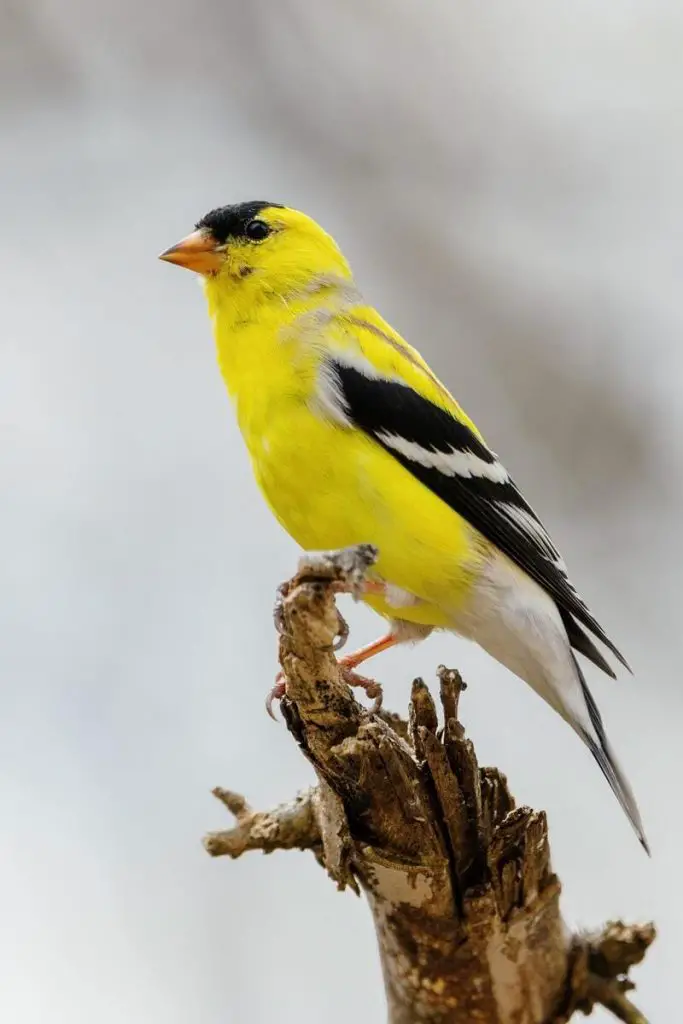
The American Goldfinch, one of the most beautifully colored birds in North America, has become increasingly widespread in Massachusetts.
This stunningly vibrant creature has adapted to both suburban and urban settings, with a varied diet consisting mostly of grains and seeds.
Bird watchers often flock to Massachusetts in late summer when the Goldfinches show off their bright yellow plumage as they search for food. The American Goldfinch is also very vocal and heard singing clearly throughout the day.
Despite its small size, this popular backyard bird is a source of joy amongst Massachusetts citizens and provides ample opportunities for people to enjoy nature while observing these beautiful creatures up close.
White-breasted nuthatch

The white-breasted nuthatch is an intriguing species to spot in the state of Massachusetts. Their unique four-note call, described as a ‘yank yank huh,’ can often be heard echoing through the trees.
The birds are rather small and occasionally seen in North America, measuring between four and five inches in length.
They prefer to live in deciduous or conifer forests, where they hunt for insects above and below tree bark.
In some areas of the country, including Massachusetts, the species has seen its numbers increase despite numerous forestry efforts taking place nearby.
As their population grows, individuals of the species have begun nesting closer to backyard bird feeders, providing birdwatching enthusiasts with excellent views of the little creatures near their homes.
Brown-headed Cowbird

Massachusetts is home to many interesting species of birds, but none as unique as the Brown-headed Cowbird. In most areas across North America, this significant species is a sign of early spring migration.
But in Massachusetts, it’s one of the resident birds that never move from their grounds. This hardy and often overlooked bird can be found year-round in forests and grasslands throughout the state. It feeds mainly on insects and visits fields for seeds during wintertime.
Interestingly, the Brown-headed Cowbird does not build its own nest, instead relying on other species to help incubate its eggs.
Massachusetts certainly has an abundance of bird-watching opportunities, and naturalists should consider adding the Brown-headed Cowbird to their list of desired sightings.
House Sparrow

The House Sparrow is a common sight throughout many parts of Massachusetts.
These small birds are known for their chirpy vocalizations and bold behavior around humans, often coming right up to feeders or perched as close as possible to people in parks.
In addition to being relatively long-lived creatures, they are also incredibly adaptable to many different settings. In fact, some municipalities have even incorporated them into control programs against insect infestations and other harmful pests, making them valuable assets to their communities.
Though not always seen in the highest regard, the House Sparrows of Massachusetts can help positively influence our corner of the world.
House Wren
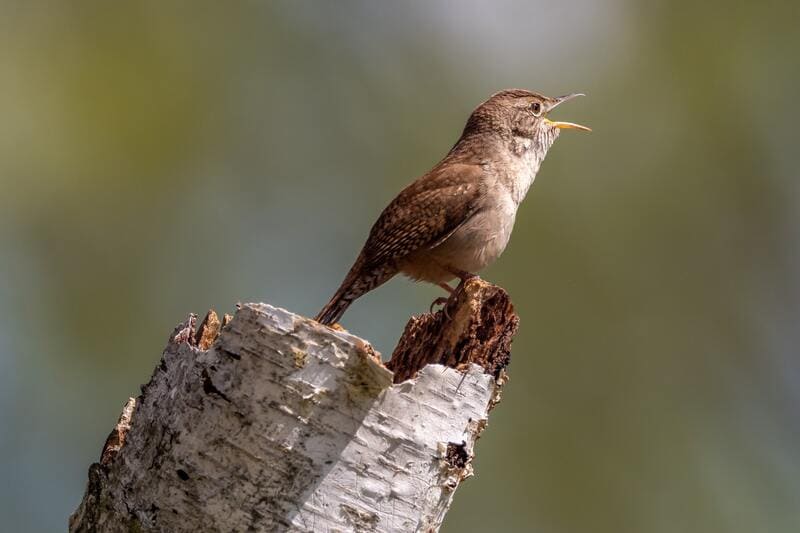
The house wren is a common species of bird that can be found in the state of Massachusetts. It can be easily identified by its rusty brown back, spotted white and cream-colored breasts, and signature twittering call. While on foraging outings close to the ground, it walks with jerky motions and bobs its tail like a pendulum.
This little bird prefers open habitats such as woodlands, wetlands, parks, and other grassy areas where dense shrubs create safe spots for nesting.
House wrens are known to occupy nest boxes created by humans, making them an amusing addition to many gardens and backyards in Massachusetts. Keeping an eye out for these birds is sure to bring enjoyment for bird watchers all over the state.
Song Sparrow

Those who live in the Bay State have the luck of being able to spot the striking Song Sparrow in their own backyards!
This small but adaptable bird is a common sight across southeastern and central Massachusetts, especially during migration.
Whenever it migrates, typically from April to October or late November, this seedeater can be seen hopping around ponds, marshes, backyards, and fields, looking for food like insects, seeds, and berries.
Its distinctive mixture of brown streaks across a grey-brown body makes it easy to identify among our region’s other birds. Enjoy spotting these lovely creatures. They are sure to make your days brighter.
White-crowned Sparrow
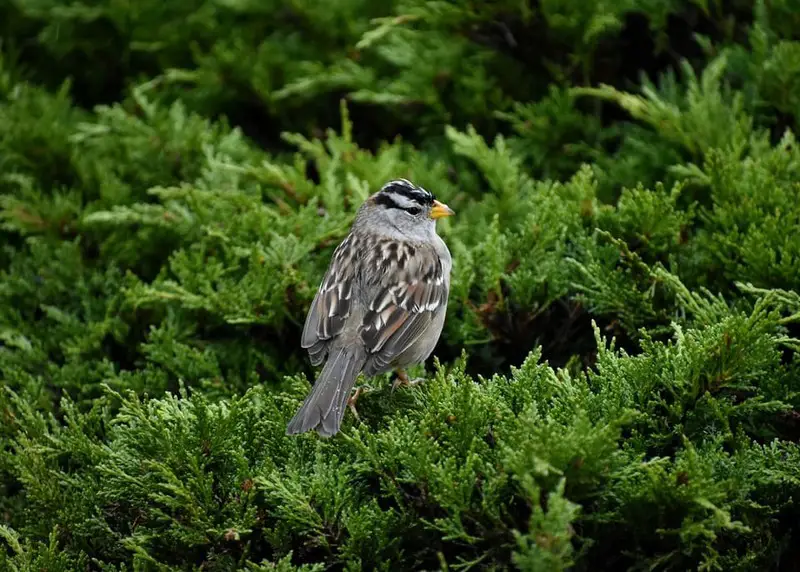
The White-crowned Sparrow is a beautiful bird that can be found throughout Massachusetts during the summer months! Its striking appearance, with its white-tipped wings, and crown, makes it quite easy to spot when out in nature.
It’s also quite a vocal bird, often singing its wonderful song even when not encountered in person.
The White-crowned Sparrow nests in low shrubs and trees near the ground during their spring migration and then fly further north for the summer, where their populations are densest.
With unique characteristics of both songbirds and sparrows, they are no doubt one of the more intriguing birds that travel through Massachusetts on an annual basis.
White-throated Sparrow
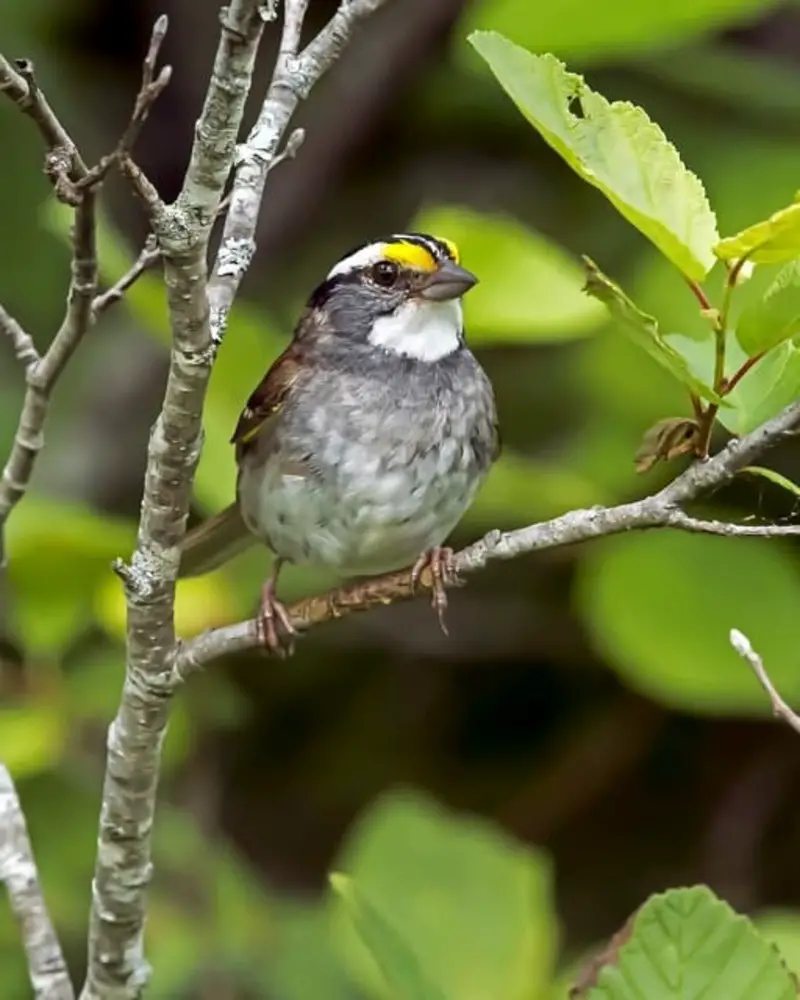
Massachusetts is the perfect place to spot a white-throated sparrow or Zonotrichia albicollis.
These migratory birds are typically found in coniferous and mixed forests of the eastern U.S. and Canada, but Massachusetts is one of their hotspots as they migrate south.
A medium-sized species of sparrows, they get their distinctive name from the white stripe that appears on their throat.
While they can be abundant during migration, the likelihood of seeing them increases even more after early spring, and often, you can hear their distinctive chirp in areas with thick vegetation cover. So if you’re a bird watcher, everglades in Massachusetts should definitely be on your list.
Chipping Sparrow
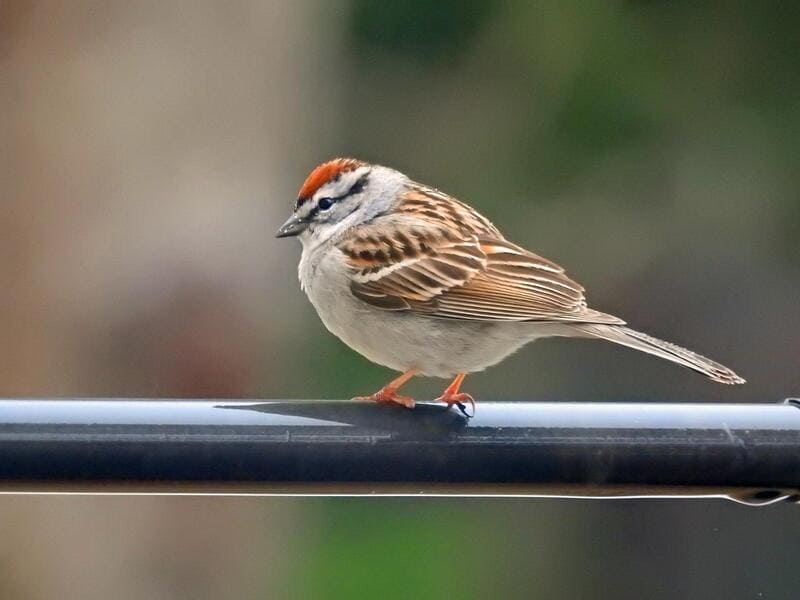
Chipping Sparrows are a species of bird native to Massachusetts! These small sparrows, with brownish-grey plumage and white stripes, are common in the state’s gardens, parks, and woodlands.
Chipping Sparrows build cup-shaped nests which they line with flower petals or other soft materials; they also often nest in dead trees or woodpiles.
These birds feed on the ground while darting back up to perches when danger arises- such as from cats!
This particular species can be recognized by its distinct call and frequent flashes of white in its tail feathers when it flies away.
Though these birds may not stand out to some bird enthusiasts, millions of Chipping Sparrows are an essential part of the beauty and diversity of Massachusetts’ wildlife.
Pine Siskin
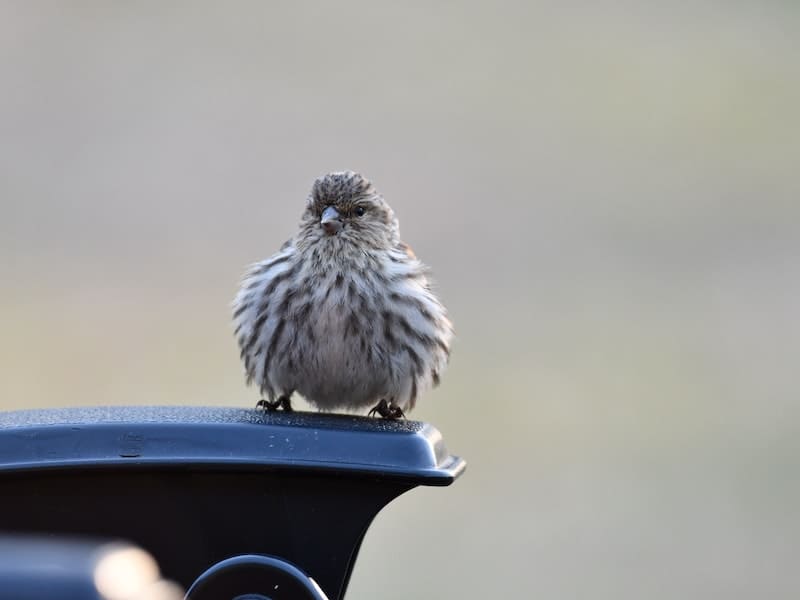
Massachusetts is home to many species of birds, and one of the most interesting is the Pine Siskin. This little finch appears throughout much of North America, but it visits only certain parts of Massachusetts a few months per year for a short break from its long migrations.
The Pine Siskin has a unique appearance, with its thick body protected by distinctive brown feathers. It also has yellow flashing on its wings and sides, which can be seen in flight or perched on tree limbs that contain tasty seeds.
They are quite sociable and often congregate in large numbers when food supplies increase during the winter months. The Pine Siskin is an exciting bird for birders as it brings a bit of variety for those who appreciate avian beauty.
Carolina Wren
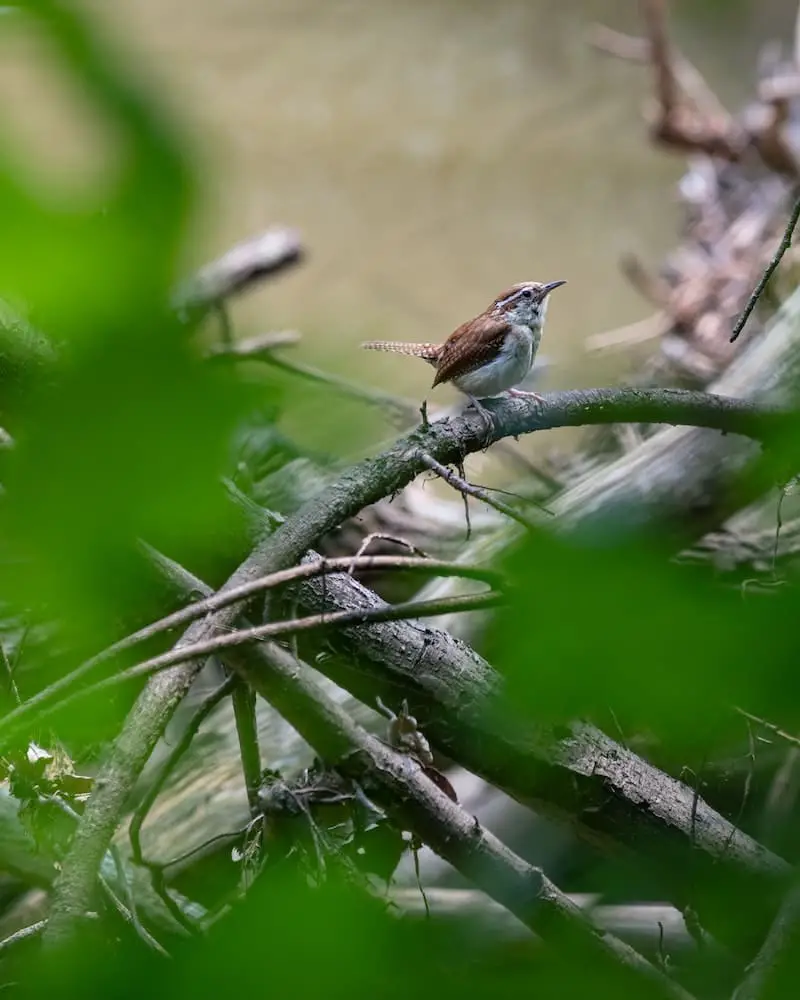
The Carolina Wren is an incredible bird species found across the United States, extending its range into even parts of Canada.
While these birds are probably best known for their prevalence in warmer climates, they have been spotted as far north as Massachusetts.
This is quite remarkable, considering how much cooler temperatures can be there.
It’s a testament to the Carolina Wren’s hardiness and adaptability that they’ve been able to find such a comfortable niche in an environment outside of their normal range.
Bird watchers living in Massachusetts should keep a keen eye out for this small but lovely species on their next nature walk.
Final Words
The data collected on these small birds in Massachusetts provides an interesting snapshot into the lives of these creatures.
The study shows that they are able to adapt to their changing environment and still maintain a healthy population.
This is good news for bird enthusiasts everywhere who want to see these beautiful creatures thrive. The implications of this study could have significant conservation value for these species of birds.
Further research is needed to understand the long-term impact of climate change on these birds and other wildlife.
You will also enjoy reading:



